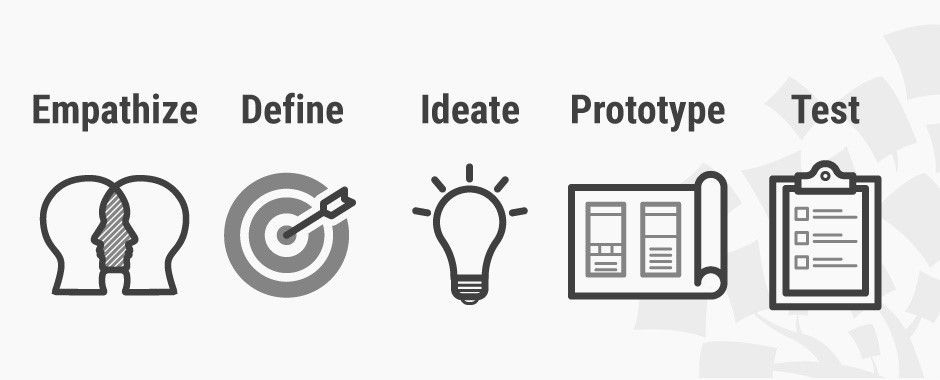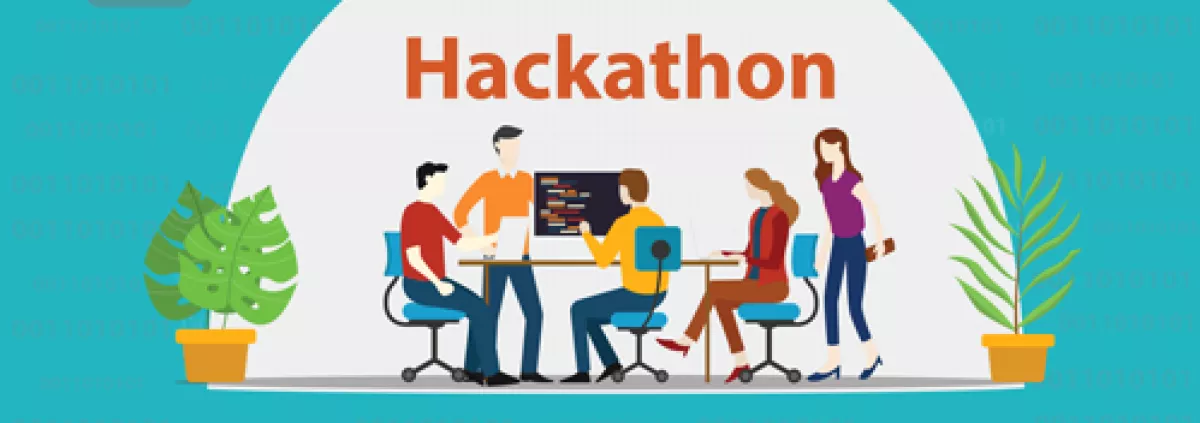Hackathons: a new form of learning to boost innovation amongst young people
Hackathon is a combination of the words “hack” and “marathon” and was originally an event for IT specialists that were coding or hacking within an intense period of time.
Hackathons are used to challenge people in co-creating new idea’s. More specifically, a hackathon is an event where people work in teams with the aim to design, build and present the most innovative solution to a real problem. Solutions may be complex products are services but they may as well be very simple things. In the end, it is all about creating value which can be economical, social or cultural.
Nowadays, hackathons are popular in the world of start-ups, but not only. More and more hackathons are used in schools and universities to encourage innovation and creativity. Companies are constantly looking for new solutions and technologies to develop new products or services and to improve production processes. For this purpose, companies are reaching out to students that can help to think outside of the box, together with companies.
On 20, 23 and 24 September 2021, a group of young people of all over the world gathered together to take part in a virtual “green” hackathon, organised by UNIDO in collaboration with European Training Foundation and WorldSkills International.
What was the challenge about and how was it done?
To find a solution to a complex problem: how can we make supply chain management in agribusiness greener?
Six international teams were put together based on their competences that varied from app development, graphic design, web design, marketing and communication to vocational ‘green skills’ such as water management, energy efficiency…. Each team received the professional support from experienced mentors from the agribusiness sector itself.
The teams had to choose which sustainable topic they want to address eg. food waste, recycling, energy saving, water management, … and which part of the agribusiness supply chain they wanted to tackle:

Source: European Commission
The design thinking method was used as a tool to guide the young professionals to come up with an innovative solution. This tool is based on the following five principles:

The teams had to define the problem they wanted to solve, to find a solution and to make a prototype of it. The prototype (or end result) could be for example an application, a platform, an awareness raising campaign or a business plan. After results after three days of intense ‘online’ collaboration with young people and mentors from all over the world was amazing.
What were the different solutions the teams came up with?
- Team 1, “OpenFoodScape”: a mobile application for food suppliers, citizens, restaurants, and farmers that allows users to find and see other foodscapes in big cities, improving sustainable and healthy food security.
- Team 2, The winning team “EZ-Eat”: an automated aquaponic food production system that cultivate fish and organic vegetables for market chains and groceries. It combines container farming, greenhouse and aquaponic systems which farmers could control with their smartphone.
- Team 3, “Agri+”: a mobile application for farmers that provides information about sustainable agricultural farming and offers a virtual marketplace that helps the matchmaking between the farmers and the demand.
- Team 4, “Me2You”: an online platform to connect four different stakeholders in a local food supply chain: producers, restaurants, charity institutions, and final consumers.
- Team 5, “SENTS”: a mobile application to tackle the problem of polluted water and excessive use of chemical fertilizers by the design of small-scale treatment facilities (i.e. ponds) in farms.
- Team 6, “Suntastic”: an online platform for consumers, agricultural resources users, the textile industry, communities, and governments that tackles the pollution of groundwater and soil by recycling textile waste and rewards the users via points and products.
Each team had to present their solution in the form of an two-minute elevator pitch to the international team of four judges. The following criteria were used by the judges to select the best solution: innovation, “coolness”, impact, and feasibility.
What did they learn?
This hackathon was an amazing experience for the young professionals as they learnt a wide range of skills and competences. They upgraded their technical skills and knowledge in the area of sustainability in the agribusiness sector (eg. cleaning water, recycling of textile, pollution linked to meat production, …) and they practiced entrepreneurship key competences such as teamwork, planning, perseverance, communication and presentation skills and creativity.
Some tips to prepare a successful hackathon
- Be clear in your objective – what problem are you trying to solve?
- The solution should be innovative: it can be something completely new or an improvement to something that is already existing
- Create multi-disciplinary small teams (approx. 5-6 people)
- Work within clearly defined time-slots
- Build evaluation moments within the programme
- Engage with experienced mentors that come from the specific sector (eg. Agri-business, Automobile)
- Test the pitching beforehand
- Foreseen an attractive price for the winning team(s): it can be money that could be used to further develop the prototype
- Have clear evaluation criteria that are shared beforehand
- Have judges that are constructive
- Hackathons should be fun!
The experience of this online hackathon and the life green hackathon of 2019 has shown that hackathons are a great example of interactive learning. It brings together learners (students, entrepreneurs, researchers, …) and mentors from companies or institutions that have the in-dept technical knowledge in a certain sector. Together they are creating new idea’s that can become a reality in the future!
For more information on the winning teams, see the following article from UNIDO:
These Youth Could Make Agribusiness Greener – Highlights of the LKDF Hackathon 2021 – LKD Facility
If you wish to know more about the hackathon, please contact:
Kristien Van den Eynde : kvd@etf.europa.eu

Great! Just such activities lead to the opportunity recognition and search of good partners
Thanks for sharing this Kristien!
It would be interesting to follow up on the next steps in the implementation solutions developed by the teams in this hackathon.
Let's invite some of the participants to share their plans with the ETF Open Space community. It seems, there is much to learn from these initiatives!
Indeed, hackathons are an innovative idea and booster for any kind of change conduct especially in education, with all my wishes for a successful iniatitive
Thanks a lot, Kristen! Reading about succesful Hackathons is always a pleasure!
Impressive!
Please log in or sign up to comment.